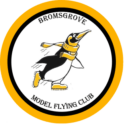Supplementary Questions
Below is a Library of Supplementary Questions that could be asked as part of the A and B tests by the examiner.
5 random questions for A test and 8 for B test
- What type of propeller shouldn’t you use?
Damaged or metal prop - Where are the ‘No Fly zones’ for this club?
Behind the Flight line of the Pilots box and two thirds the way across second field in front of Pilots - When you turn up at the flying field you should be considering various things which can be summarised under an Acronym of SWEETS. What is this and give examples?
Sun – is it sunny today and where will it be in relation to flying – Sun glasses, cap
Wind – What it is wind direction, strength and do I have a suitable model for the conditions
Eventualities – What happens if a full size plane fly’s close by or walker appears across footpath. What happens if the landing patch suddenly becomes obstructed?
Emergencies – When carrying out manoeuvre consider the consequence if you get a Deadstick Where is first aid box, where is the nearest hospital, what is the location of our flying field for emergency services, What3Words location, Where is the Fire Blanket
Transmitter Control – Use of Peg board for 35Mhz, is Tx set up as per SMART
Safety Rules – Make sure you are conversant with current Club Safety Rules
- Which type of models need to be restrained when starting or inserting battery?
All types IC/Petrol and Electric - What SMART basic transmitter checks should you make before each flight?
S – Switch On
M – Correct Model, meter in GreenA – Aerial extended (35Mhz) or in right position for 2.4Ghz
R – Correct Rates for model
T – Tx Battery charged, Trims in right positions
- How many IC/Petrol aircraft are allowed at any one time? How many are allowed in total?
3 IC/Petrol PlanesMax 5 in total
- If you’re not flying and you see a full size aircraft coming towards the flying area, what should you do?
Notify those pilots that are flying that there is an approaching aircraft and from which direction and approximate height - What is the maximum weight before CAA approval?
25kg including fuel - What is the minimum Failsafe setting?
Throttle to go to minimum settings - If you have a heavy landing what should you do before flying again?
Check airframe, control linkages and undercarriage - When should a Failsafe be set?
Always if the Transmitter is capable of doing so and if the Aircraft is over 7.5kg including fuel
